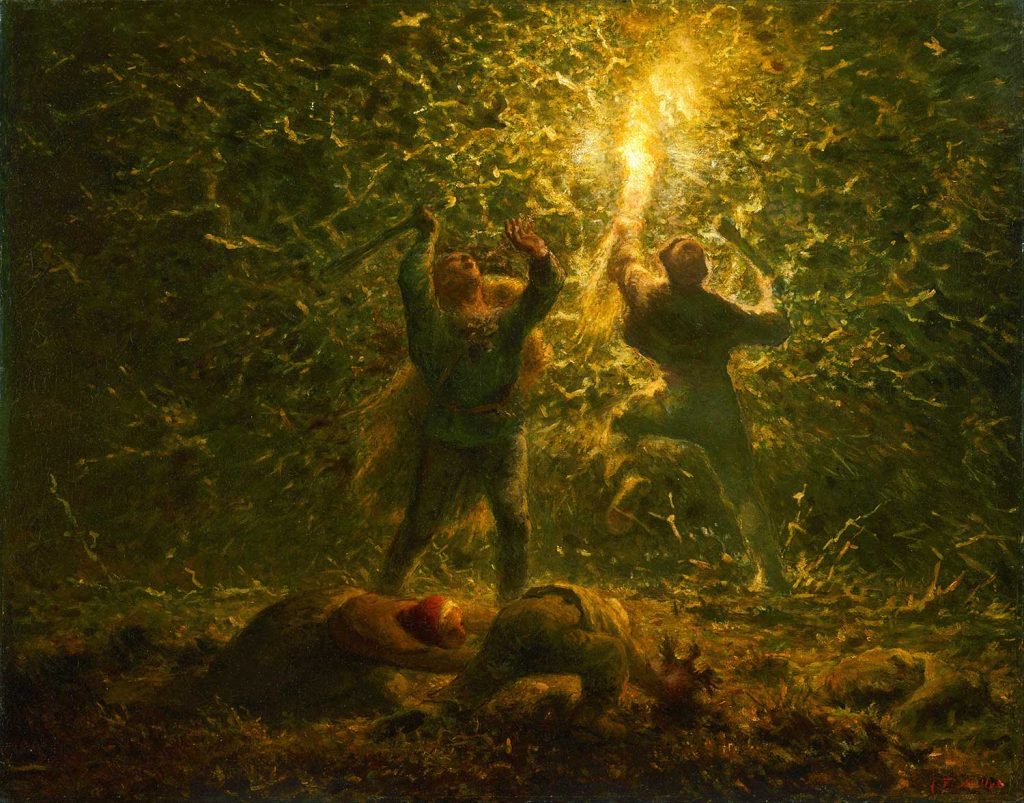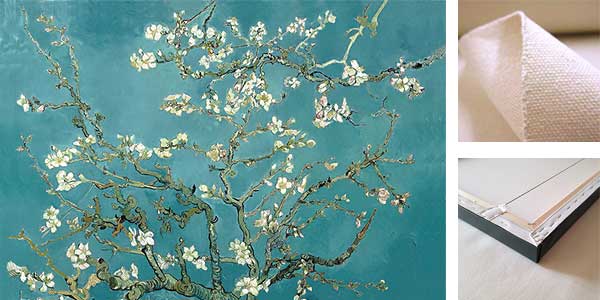
Bird’s-Nesters by Jean-François Millet was created in 1874. The painting is in Philadelphia Museum of Art. The size of the work is 73,7 x 92,7 cm and is made as an oil on canvas.
Known for his realistic portrayals of French peasants, Millet produced this painting at the very end of his life. He based the scene on stories from his childhood that told of great flights of wild pigeons. When the birds settled in trees at night, the peasants blinded them with light from torches and then clubbed hundreds to death. Read more in Philadelphia Museum of Art.
About the Artist: French artist Jean-François Millet was born in Gruchy, Gréville-Hague. He was a French artist and one of the founders of the Barbizon school in rural France. Millet is noted for his paintings of peasant farmers and can be categorized as part of the Realism art movement. In 1833 his father sent him to Cherbourg to study with a portrait painter named Bon Du Mouchel. By 1835 he was studying with Théophile Langlois de Chèvreville, a pupil of Baron Gros, in Cherbourg.
It was in Paris in the middle 1840s that Millet befriended Constant Troyon, Narcisse Diaz, Charles Jacque, and Théodore Rousseau, artists who, like Millet, became associated with the Barbizon school. In 1849, Millet painted Harvesters, a commission for the state. From 1850 to 1853, Millet worked on Harvesters Resting (Ruth and Boaz), a painting he considered his most important, and on which he worked the longest. Despite mixed reviews of the paintings he exhibited at the Salon, Millet’s reputation and success grew through the 1860s. In 1867, the Exposition Universelle hosted a major showing of his work, with the Gleaners, Angelus, and Potato Planters among the paintings exhibited. Read more
You can order this work as an art print on canvas from canvastar.com

